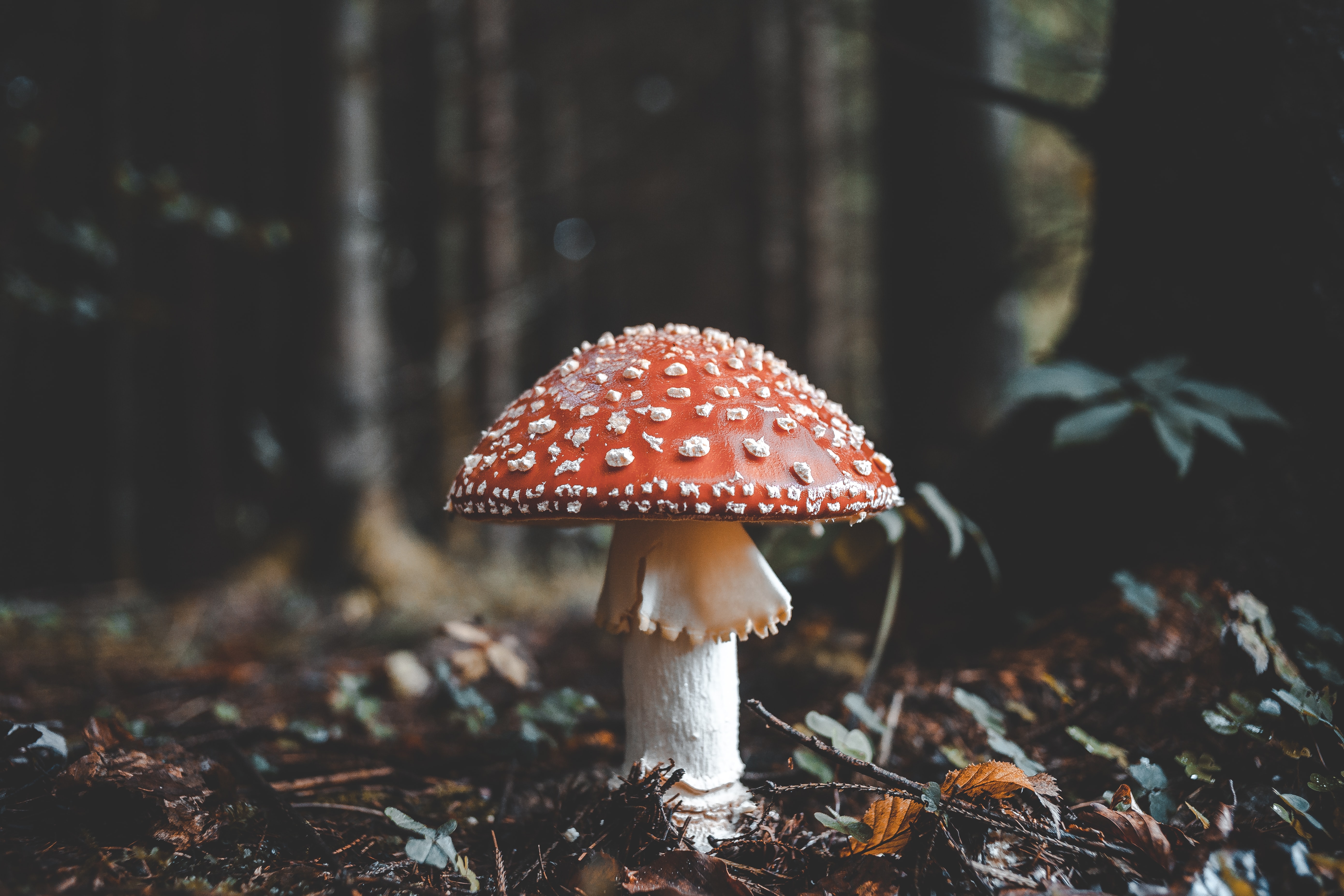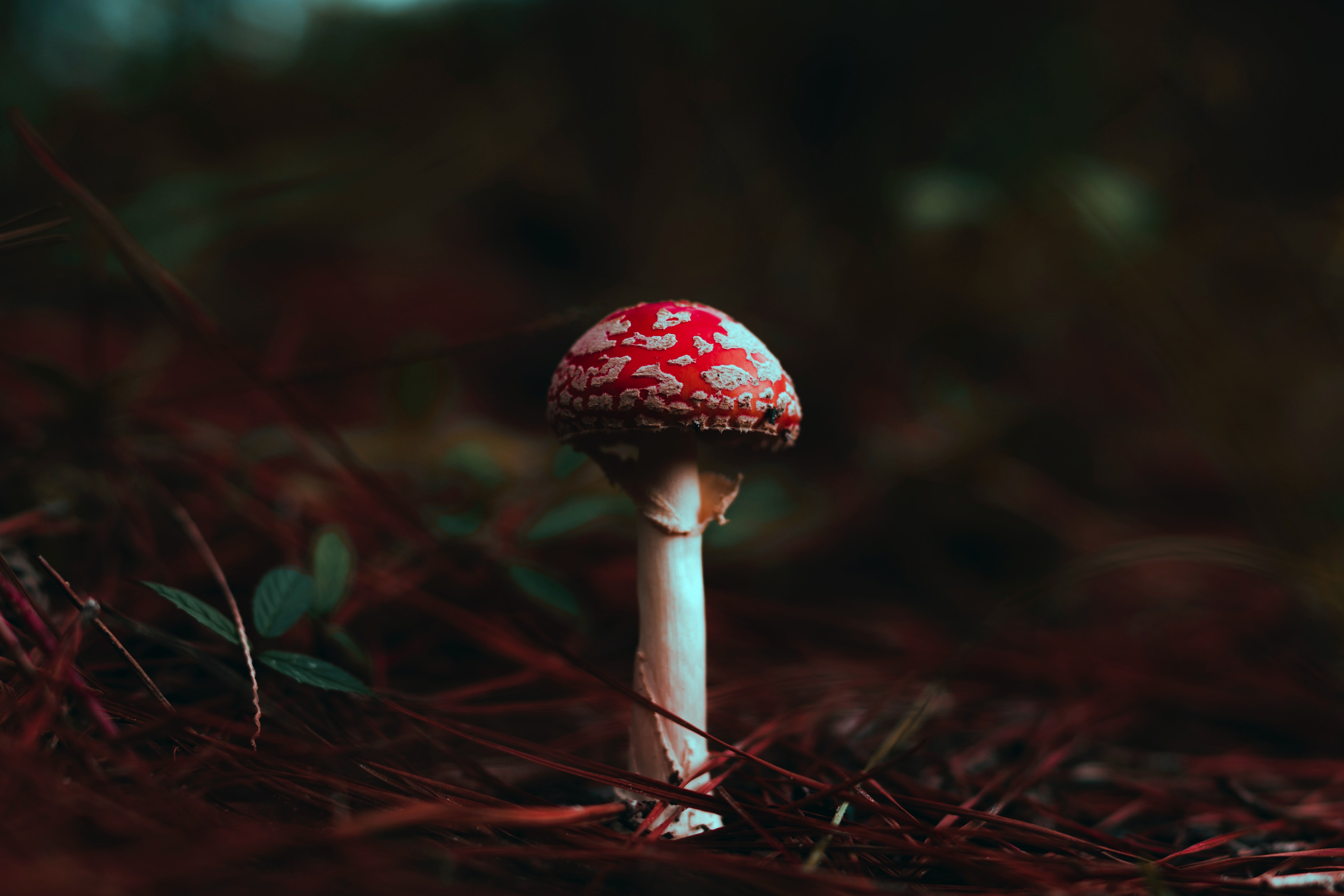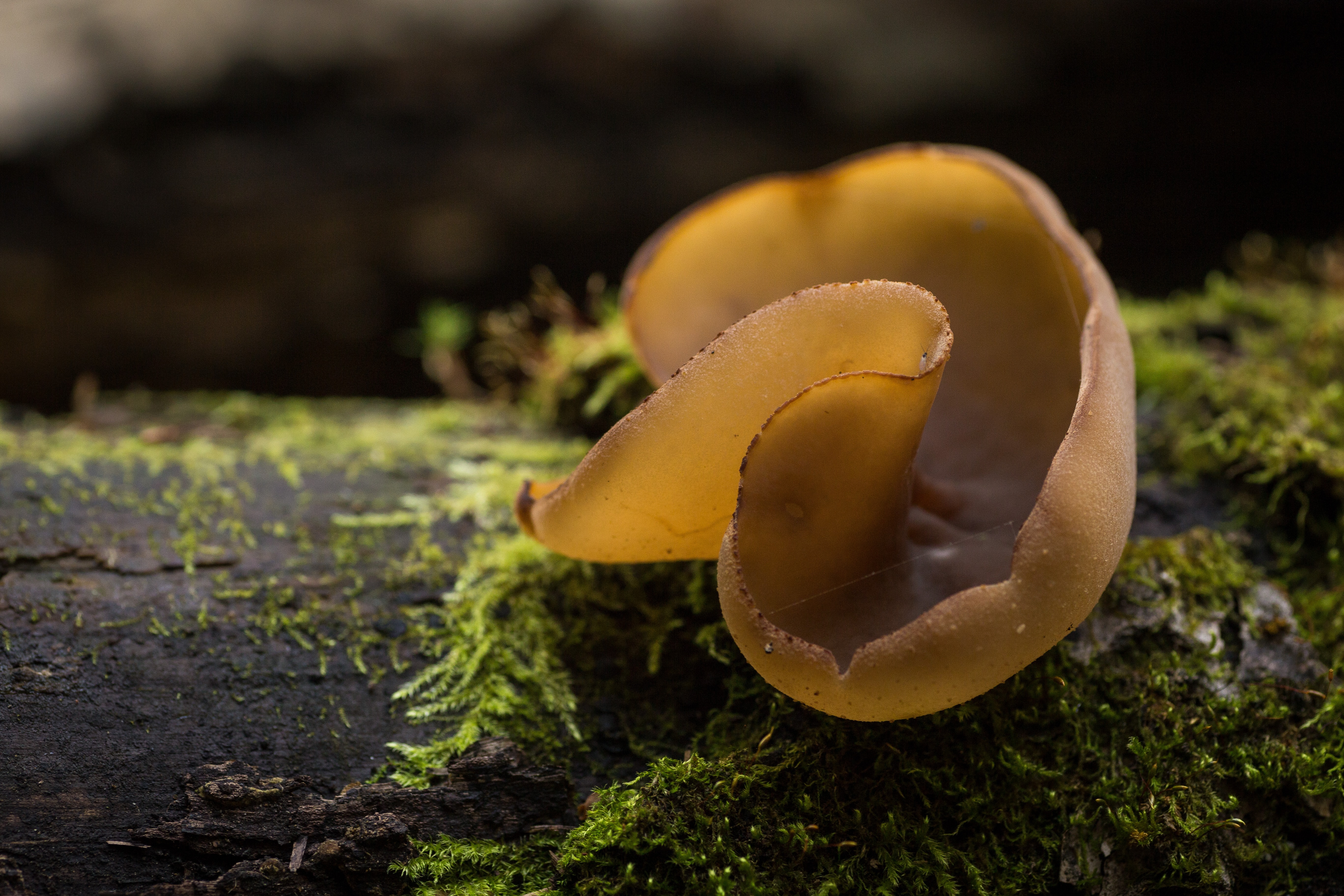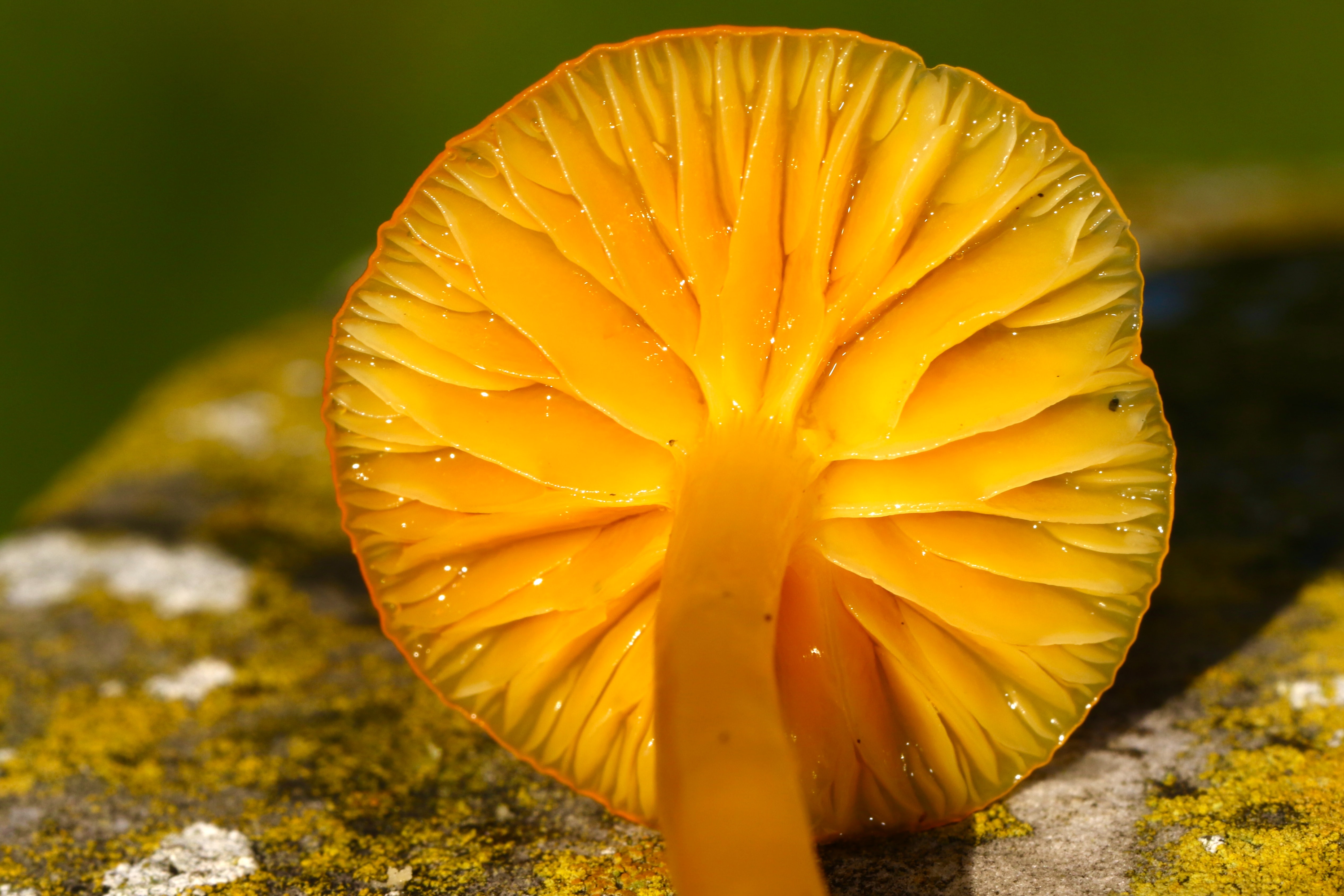What Mushrooms Can Teach Us About Community
March 22nd, 2021
Wandering in the woods recently looking for fungi, I was thinking about how our longing for community and belonging is so central to being human, and I began to consider fungi and mycelium as beautiful role models for those lost connections, right beneath my feet.
(Mycelium is the vegetative part of a fungus or fungus-like bacterial colony, consisting of a mass of branching, thread-like hyphae. Through the mycelium, a fungus absorbs nutrients from its environment.)
Humans have long been in a close relationship with this huge family of organisms – notoriously capable of feeding us, healing us, providing us with psychedelic experience, and even killing us. For thousands of years, fungi have been a part of our lives - in the most obvious way, mycelium networks are what made it possible for our food plants to grow at all. But even in our modern, urbanised cultures, fungus keep us company every day. Without fungus, there is no coffee, tea, wine, cheese, bread, chocolate or beer, not to mention medicine, most famously antibiotics.
There is so much we don’t know about mycelium and its role on the planet, but there is a really encouraging trend towards re-membering the natural world in general, and ourselves as part of it, including the mysterious and powerful Kingdom Fungi. Perhaps this heightened awareness has been brought on by the climate crisis, or the epidemic of loneliness and isolation in our communities. Or maybe it’s the exciting new discoveries about mushrooms as strong, safe materials which we can use to build our homes, or harness in industry and technology. But what we are slowly understanding is that without mushrooms and the mycelium that supports them, there would be no plant, animal or human life. Mycelium is our ancestors, the organism that brought life up out of the primal waters and onto land, our Mother in the broadest sense. Mushrooms and mycelium are quite literally our kin – our bodies are actually made up of a larger number of fungi cells than of any other! If we want to continue to thrive as a species, we need to reacquaint ourselves with our family of origin.

As the most successful organisms on earth, we should pay more attention to their incredibly effective survival technique – connection. As an intuitive, and someone who works very much with connections, and trying to see our place in the whole, I think we can learn a lot about our own condition by looking at the beautiful way mycelium behave and thrive alongside other species.
During this last year, we have all felt, in our own ways, what happens when we lose connection with each other. Where we may previously have taken these connections for granted, or dismissed the need for them entirely, we are now experiencing the effects of prolonged periods without meaningful human contact. Physically, emotionally, spiritually and mentally, we have all suffered from reduced communication with each other, and whilst this has been a huge challenge, there is an opportunity for us to learn what it is we really need as human beings, and how we can foster ways to create and look after those connections in future.
We have been predominantly raised in the West by the cult of the rational and the importance of the individual. As these principals gained ground in our culture, we lost balance with the feminine values of connectedness. We also lost touch with the beautiful truth of ourselves as Nature, with devastating effect. The feminine principle, which is concerned primarily with relationship, interdependency, adaptation and cooperation, has faced near extinction in our everyday lives. As a result, our sense of community, and our part in Nature as a whole, has become more and more fragmented. What we are realising now, and even more so in the pandemic situation, is that we have terribly undervalued this precious way to be human.
This tragic disconnect from the web of life on earth is something that has far reaching effects in terms of looking after our planet, and also ourselves. Mycelial networks show us something truer. We have yet to understand the complex power dynamics amongst non - human life forms, but among trees and fungi we know there is a fascinating support system between weaker partners and stronger ones. In his wonderful book The Hidden Life of Trees, Peter Wohlleben tells us how the young healthy organisms in a forest, often take care of the sick or the elderly in the most touching ways. No single unit is able to thrive without the other, and there is a place in the ecosystem for everyone. We see these different life forms working together, in sync, like a murmuration of starlings. They act as part of a whole and unified body, all supported by the miracle connectors, mycelium. In their version of reality, there is no need for a leader, no boss, no hierarchy of power. All the elements work together as part of a bigger ecosystem, within thousands of miles of constantly growing mycelial connections, always reaching outwards. If we could renew our vision of ourselves as the same thing as Nature, part of it, as natives among it, imagine the difference in the way we’d look after our communities and the planet.
Mycelium as a role model is the very embodiment of connectivity, and for mycelium to grow and evolve, the hyphae (the growing tips of each tiny thread of mycelium) must connect and branch all the time, constantly reaching out for more and new connections. They search almost intuitively, for moisture, food, light and warmth, and where they find a nourishing environment, those hyphae thicken and strengthen, and where the environment does not feed or nourish, those hyphae die back. Despite setbacks, mycelium is constantly adjusting, and the hyphae continue to reach out. That is how they grow and thrive, by depending on and prioritising connection.

As an intuitive worker, I love this as a way of looking at our own lives, where we can make choices intuitively, based on what feels deeply right. Although this intuitive knowing can take some practise, it is something we can all re learn. And where there is our own soul’s version of nourishment, light, warmth and moisture, there we will slowly be able to re–member community. It can feel overwhelming trying to get from where we are now, to the community we long for. But in many small ways, we CAN make a difference and actually start to build that supportive web. By responding to our neglected instinct for eye contact, a smile, a wave, or a conversation with a stranger – not to mention a letter, an email, or a phone call, we can make meaningful connection. Instead of dismissing these instincts, we could prioritise them, and give them value. These are very simple ways we can feel our way into contact, like those hyphae tips, even walking alone through the streets in lockdown. It requires a certain openness and vulnerability, courage even, to trust this process, and each other. But if we have faith in the invisible web, which we are intrinsically part of, the ripple effect of our small continuous efforts at contact will feed us all, like mycelium, in ways we never imagined.
We are only just beginning to learn how these organisms make decisions, and what they are capable of, but we do know that they wander and explore, with no plan, no map, and no command centre, very much like an intuitive approach. The hyphae are not afraid of a “wrong move”, but experiment constantly, playfully testing one avenue after another in a continuous trusting search. When we live intuitively we work to restore balance, connectivity, and communication between ourselves, and slowly the illusion of the individual weakens. In this way, we can learn like mycelium, ways to become in service to life itself.
Paul Stamets, the American mycologist and entrepreneur, gives us a beautiful analogy of how the individual can function as part of a whole. This is particularly useful as we have so few models for true community in our individualist culture. He uses the example of polyphonic singing in terms of describing mycelium, and the way they function. With Polyphonic singing, all voices make up the whole. This differs from singing in harmonies, where someone leads and the others adapt around that voice. In this case, each voice is totally different, singing a unique tune that makes some sense alone, when heard separately. But when they are sung together, you can barely distinguish each separate thread of song, and a new whole is created, which is more than the sum of its parts.
He describes each melody as a hyphae tip, exploring, expanding and moving alongside the other voices. In this way, the many songs make one song and only display their true beauty when alongside each other. For me this really starts to illustrate the enigma of community in its fullest form. To be part of a community we don’t have to give up our unique natures, on the contrary, we offer ourselves and our gifts all the more, and in this very act of offering ourselves, the whole organism can really grow healthy and shine.
There is so much opportunity and challenge in what we face as humans, but maybe the age of the Divine Feminine is returning, and there will be the cultural transformation that so many of us long for. Because, when we witness the intricate mass of connecting strands that make up mycelium, and understand how far reaching this stuff is, from every inch of our bodies inside and out, in every breath of air we take, under every piece of ground we stand on, we can see a pattern and a model for our own ways of living and thriving. And the staggeringly diverse fruit of mycelium, the mushroom, in all its myriad variety, colour, size, shape and function, is very much like ourselves and our gifts. This extraordinary fruit is only made possible by the endless connected whole beneath them.

Once we realise how much we rely on fungi in all its forms, and that our vulnerable ecosystem, particularly the old growth forests, are vital to this incredible web of life of which we are an integral part, surely we will learn to be better caretakers. Then we can start to reap the benefits of cooperation and generosity in all our networks, and on a broader scale, maybe we will find the answers to some of our biggest problems right beneath our feet.
The elaborate structure of mycelium, and the way it moves, feels, thinks and functions, all speak of the same thing, a beautiful embodiment of togetherness. I believe this way of being in relationship echoes inside all of us, it chimes with familiarity, and our hearts deeply recognise it.
Finally, the modern world is falling in love with Kingdom Fungi. It’s been a long time coming.
References
The Hidden Life of Trees – Peter Wohlleben
Fantastic Fungi – Louie Schwartzberg
Entangled Life – Merlin Sheldrake
Belonging – Toko-Pa Turner
Beth Forrester is an Affiliated Member of The Isbourne.


